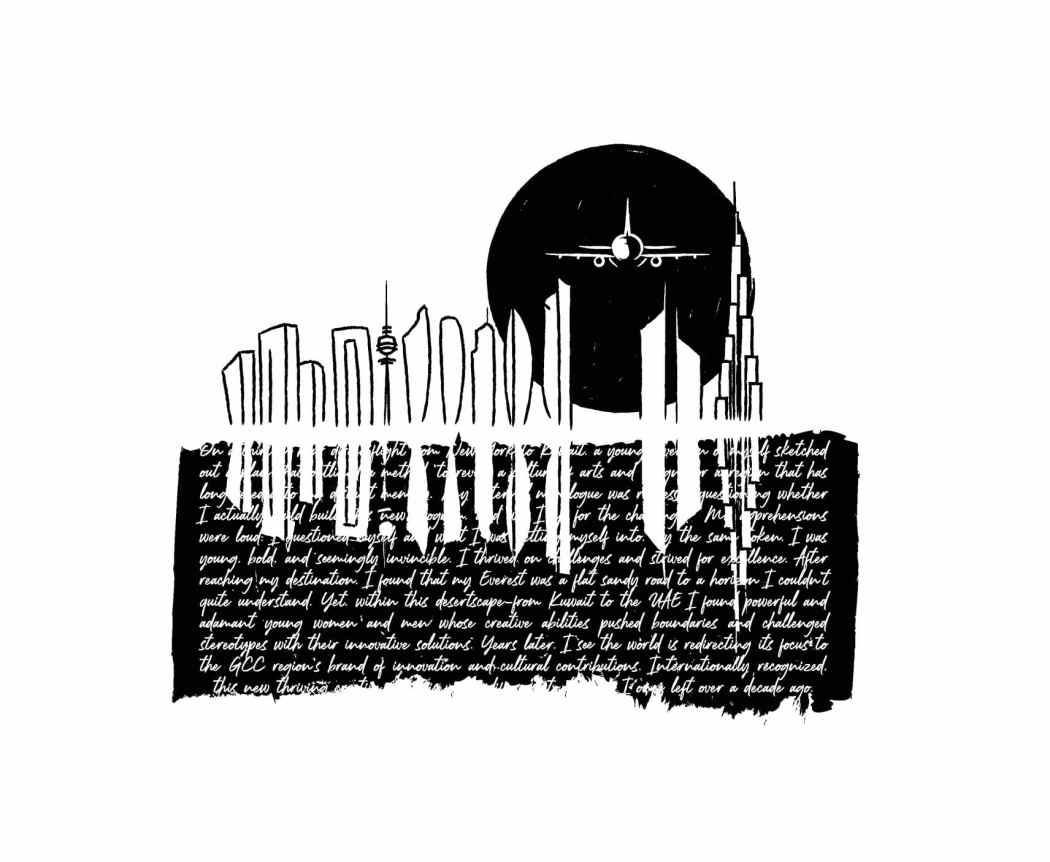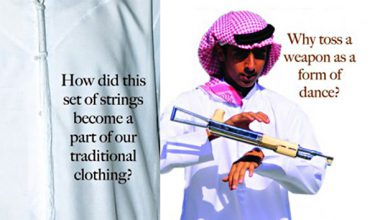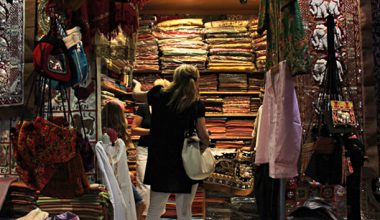On a thirteen hour direct flight from New York to Kuwait, a younger version of myself sketched-out a plan that outlined a method ‘to revive a culture of arts and design’ for a region that has long receded to my distant memory. My internal monologue was restlessly questioning whether I actually could build this new program, and was I up for the challenge? My apprehensions were loud. I questioned myself and what I was getting myself into. By the same token, I was young, bold, and seemingly invincible. I thrived on challenges and strived for excellence.
After reaching my destination, I found that my Everest was a flat sandy road to a horizon I couldn’t quite understand. Yet, within this desertscape—from Kuwait to the UAE—I found powerful and adamant young women and men whose creative abilities pushed boundaries and challenged stereotypes with their innovative solutions. Years later, I see the world is redirecting its focus to the GCC region’s brand of innovation and cultural production. Internationally recognized, this new thriving creative scene is vastly different to the one I had left over a decade ago.
Cultivating Creative Thinking: Classrooms and Communities
In the American University of Kuwait, where I taught as an assistant professor (2006-2009), the challenge went beyond having to build a brand new Graphic Design program. Simultaneously, I had to cultivate a design-centric community to embrace the students and allow them the space to create, change, and flex their skills. The main goal in the classroom was to instill confidence, nurture innovation, and push the students to apply creative concepts in practice.
It was imperative to plant the importance of ethics and values to the ideas they developed, while concurrently cultivating the essence of social responsibility within the local corporate culture.
The first batch of students that graduated from the program in 2008, transitioned into a job market that didn’t understand what a Graphic Designer does. They were constantly asked to work fluidly between marketing and public relation posts, rendering their design skills—at best—obsolete. It was imperative for the students, alums, and their networks to create an ecosystem to educate and raise awareness on the importance of design practices. Since then and over the past decade the design sector in Kuwait has witnessed the return of graduate degrees, design clusters and initiatives, and creative entrepreneurial businesses spreading from Kuwait to the Gulf at large. As well as the initiation of multiple design programs that cater to the now ever-present demand for local designers in the creative workforce.
By 2014, I moved on to an established program at Zayed University, in the United Arab Emirates (UAE), and it was certainly a different experience. Starting on the Dubai campus and later moving to Abu Dhabi, it was clear that the program would benefit from an immediate and substantial infusion of community outreach to move beyond its alma mater pride. In Kuwait, the involvement of the community in the senior shows—from recruitment to parental pride—played a crucial role. In Dubai, the brink of becoming the design center of the Middle East with an already established Dubai Design Days and Dubai Design District, the need was to collaborate and integrate the design capacities of the prospective graduates into wider creative networks beyond the classroom.
Within the first 2 years I negotiated and set up with colleagues, community artists, and creative professionals the Graduate National Design Show initiative. Through this initiative, local universities exhibit their senior capstone projects at Dubai Design District (d3), rather than doing so separately on their respective campuses. We did this to nurture the spirit of collaboration and showcase the student’s promising designs to professional communities. In Abu Dhabi, twofour54, the city’s Media Zone, embraced my proposal to support the young students prior to graduation, by hosting their capstone critiques within their buildings and to their comprehensive corporate media network. Through this, students received live, up-to-date industry standard critiques and best practices feedback. This type of industry support continues to strengthen and respond to the national mission and vision of building the inclusivity of the arts and culture industries.
Heritage Rebrand
Visual identities in the Middle East and North Africa (MENA) over the past decade have been relying on local context and cultural symbolism for branding, advertising, and concept development. Teaching socio-cultural branding techniques was the ideal way to address the issue of appropriation that was a common practice among advertisers and the majority of the visual campaigns on billboards across the region.
Encouraging my students to rely on what they innately know—i.e. their heritage—transformed traditional classroom roles. It was the students that were the experts now. This inevitably gave students the power to lead discussions and create campaigns and slogans with a modernized sense that relied on an identity they now felt they controlled, which moved the design processes from appropriation to innovation.
Visual Communication (whether in the creative field or educational programs) in the Arab world at large, and the Gulf Cooperation Council States (GCC) in specific, were handled in their majority by expats. As more of the local culture and traditions were integrating into brand stories and living campaigns, students and young graduates found their respective places in the field through their products, projects, and design posts in various public and private institutions.
Hold on… are we all entrepreneurs out here?
Obviously not! However, the likelihood of most of us knowing an entrepreneur or an entrepreneurial initiative are pretty high in the GCC. The overall influx of startups and small businesses owes much to the development of the creative industries and the output of creative thinkers.
Government directives to diversify the economies and initiatives of cultural diplomacy played a major role in enriching the various opportunities available to design graduates. Social media has also created cross-boundary platforms for budding designers to relate to the Zaha Hadid’s, Ashi’s, Hakima Al Said’s and Yousif Nabil’s of the MENA region.
The narratives created and shared fostered a brand new domain of practicing empathy and creative expression, which are cornerstone values to innovative design thinking, be it for hybrid or for profit businesses within the bustling creative economies of the region. Much like the boom of social media is responsible for the new socio-political category of local influencers in their multitudes of disciplines and overlapping roles, design dictated the change of regional economies tangibly and in an inevitably interdisciplinary way.
Moving Forward
The most rewarding part of teaching design in the GCC has been the measurable impact I see on the lives of my students both in the classroom and in the creative community Operation next: Graduate Degrees in Design and Digital Imaging to meet the high demands in the GCC (I am primarily talking about my network of minions across borders that I know would want to continue working on excelling their crafts and skills). Hundreds of ex-students have messaged and asked me to look into building graduate degrees for them so we can once again have our time in the classroom.
My ultimate goal since moving back to the Middle East after my degrees from the Maryland Institute College of Arts (MICA) was to pass on the excellence, pioneering methodologies, and education I received as my way of giving back. Creating this design community where competition is healthy and former students can reach each other and form businesses, collaborative initiatives, and find resources for their continued education. This is not only sustainable but the very definition of designing forward. If I taught, mentored, or coached you at any point, get in touch. I miss you… let’s keep designing together!
Dahlia Mahmoud MFA MA is a design educator and consultant, presently at her post of Assistant Professor at Zayed University in Abu Dhabi. Her experience spans developing programs in the creative professional field for MENA and GCC economic structures. @dolshark
Illustrations by Mahjabeen Ahmedi
This piece was first featured in Khaleejesque Issue #37 March 2019.







